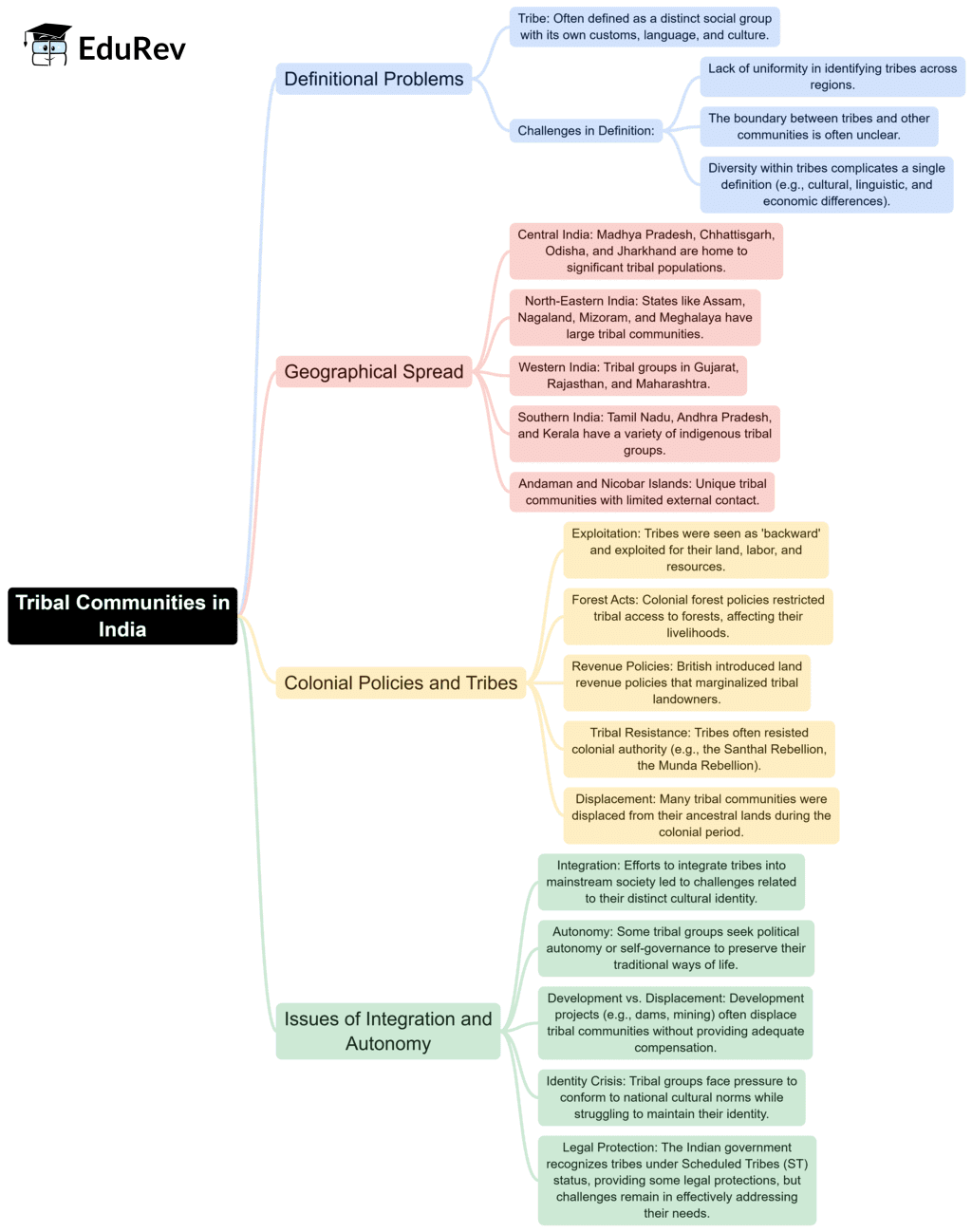UPSC Exam > UPSC Notes > Sociology Optional for UPSC (Notes) > Mind Map: Tribal Communities in India
Mind Map: Tribal Communities in India | Sociology Optional for UPSC (Notes) PDF Download

The document Mind Map: Tribal Communities in India | Sociology Optional for UPSC (Notes) is a part of the UPSC Course Sociology Optional for UPSC (Notes).
All you need of UPSC at this link: UPSC
|
120 videos|427 docs
|
FAQs on Mind Map: Tribal Communities in India - Sociology Optional for UPSC (Notes)
| 1. What are the main characteristics of tribal communities in India? |  |
Ans.Tribal communities in India are characterized by their unique cultural practices, languages, and social structures. They often have a close relationship with nature and rely on traditional methods of agriculture, hunting, and gathering. These communities typically have distinct social norms and values, with a strong emphasis on community living and kinship ties.
| 2. How does the Indian government support tribal communities? |  |
Ans.The Indian government provides various forms of support to tribal communities through policies and schemes aimed at improving their socio-economic conditions. This includes financial assistance, educational programs, health care initiatives, and land rights recognition. The Scheduled Tribes and Other Traditional Forest Dwellers (Recognition of Forest Rights) Act, 2006 is one such legislation aimed at protecting the rights of tribal populations.
| 3. What challenges do tribal communities in India face today? |  |
Ans.Tribal communities in India face numerous challenges, including poverty, lack of access to quality education and healthcare, displacement due to development projects, and loss of traditional lands. Additionally, they often encounter social discrimination and marginalization, which further exacerbates their vulnerabilities.
| 4. How are tribal communities in India represented in the political system? |  |
Ans.Tribal communities in India are represented in the political system through reserved seats in the Lok Sabha (the lower house of Parliament) and state legislative assemblies. The Constitution of India provides for the representation of Scheduled Tribes to ensure their voices are heard in the decision-making process. Additionally, various local governance bodies, such as Panchayati Raj institutions, also have provisions for tribal representation.
| 5. What role do NGOs play in supporting tribal communities in India? |  |
Ans.NGOs play a crucial role in supporting tribal communities by providing various services such as education, health care, and vocational training. They work to empower tribal populations by advocating for their rights, promoting sustainable development practices, and facilitating access to government schemes. NGOs often collaborate with tribal communities to help preserve their cultural heritage and improve their livelihoods.
Related Searches
















